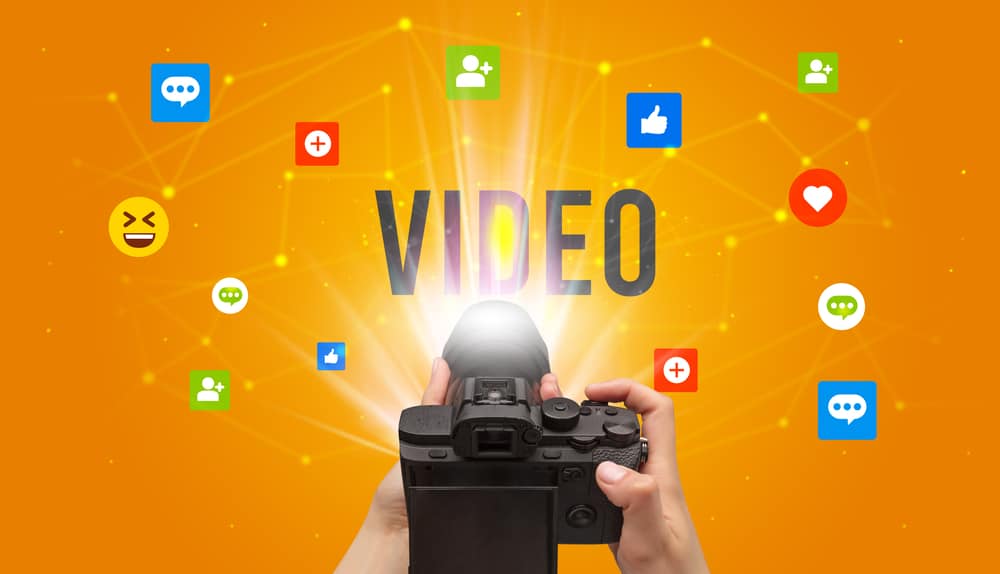The Evolution of Public Relations: From Traditional to Digital
Public Relations (PR) has come a long way, evolving from the days of press releases and media pitches to the fast-paced, digital world we live in today. What once relied on newspaper coverage has transformed into a dynamic mix of social media, content marketing, and data-driven strategies.
With digital tools, brands can connect with audiences instantly, measure their impact in real-time, and build genuine relationships through two-way communication.
The journey from traditional to digital PR isn’t just about keeping up with technology—it’s about finding the engagement to reach an authentic and impactful new digital audience.

Let’s start at the beginning
The Publicity Bureau, founded by former Boston journalists, including Ivy Lee, is said to be the first public relations agency. Ivy Lee, often considered the father of PR, played a pivotal role in establishing PR as a professional field. In 1906, he published his Declaration of Principles, advocating for transparency, accuracy, and a focus on topics of public interest in PR work, a significant contribution that shaped the field of PR as we know it today.
By the 1940s and 1950s, PR evolved into a more strategic discipline known as “public relations counsel.” This approach moved beyond mere publicity to focus on managing an organisation’s reputation and building relationships with key stakeholders. Strategic communication became central to shaping public perception and fostering trust.
A notable example from this era is the ‘Rosie the Riveter’ campaign, launched by the U.S. government during World War II to encourage women to join the workforce. Through posters, films, and magazines, the campaign challenged gender stereotypes and promoted the idea that women could succeed in traditionally male-dominated roles. The iconic Rosie image became a powerful symbol of female empowerment and significantly shifted public attitudes about women’s societal roles, inspiring a generation of women and making it one of the most impactful PR campaigns of its time.
From then on, we started to see public relations being more focused on news, media relations, and print publicity, which played a crucial role in shaping public perception through traditional media channels.
Today, the definition of Traditional PR from Forbes is “Traditional PR encompasses a long-established and classic way of amplifying brand awareness. To reach an audience, it uses timeless advertising avenues such as TV, radio, billboards, newspapers, magazines and books. It has been around for as long as PR efforts have existed. It does not consist of attracting an online presence, so the techniques of traditional PR can seem limited in our advanced day and age.”
The primary tools of traditional PR included the following –
Press Releases: A press release is a written communication that announces newsworthy information about a company, product, or event. It was the cornerstone of traditional PR, used to inform the media about significant updates in a structured and professional format. Press releases were distributed to journalists and media outlets to secure coverage.
Press Conferences: Press conferences are events organised to make significant announcements, allowing brands to communicate directly with the media. These conferences allowed spokespeople to deliver critical messages, answer questions, and manage the narrative surrounding important developments. They were particularly useful during crises or major launches, helping control the flow of information to the public.
Print and Broadcast Media: Traditional PR heavily depended on securing coverage in print and broadcast media, including newspapers, magazines, radio, and television. Coverage in these outlets provided a powerful platform to reach broad audiences, establish credibility, and shape public opinion. PR professionals cultivated close relationships with journalists, editors, and producers to ensure their stories were featured prominently.
Traditional PR was about strategically managing a brand’s public image through established media channels. Despite the evolution of PR into the digital age, these traditional components still hold value and continue to play a role in comprehensive PR strategies, especially when targeting audiences that consume news through conventional media.
How has Tradition PR evolved?
In the 21st century, PR has had no choice but to transform significantly with the rise of digital media. The explosion of social media platforms, blogs, and other online channels has provided organisations with new avenues to engage with audiences, meaning their news and announcements now need to be digitalised and consumed differently.
The definition of Digital PR from Forbes is “Digital public relations involves an effort to boost a brand’s online presence. It is a marketing tool businesses can use online to place their company in a positive light. Because it is online, it generally has a much greater reach than traditional PR.”
“The benefits of digital PR are that you can be creative, unique and flexible in your approach. As opposed to the sales pitch approach of traditional PR, digital PR requires subtlety.”
The key components of Digital PR include social media, content marketing, SEO, and analytics. Quite a step from the Traditional PR model.
Social Media: Social media platforms are powerful tools for engaging with audiences, sharing content, and amplifying brand messages. By leveraging platforms like Facebook, Twitter, LinkedIn, and Instagram, brands can build relationships, gain exposure, and respond directly to customer feedback, enhancing their online reputation.
Content Marketing: Creating valuable, relevant, consistent content is crucial for Digital PR. High-quality content, such as blog posts, infographics, videos, and press releases, helps to tell the brand’s story, educate audiences, and build trust. Engaging content also encourages sharing, leading to increased backlinks and organic reach.
SEO (Search Engine Optimisation): SEO is a critical component that ensures content reaches the right audience. By optimising content with relevant keywords, meta tags, and quality links, brands can improve their search engine rankings, making it easier for potential customers to find them.
Analytics: Analytics tools help measure the effectiveness of Digital PR efforts by tracking metrics such as website traffic, engagement rates, and conversion rates. By analysing these metrics, brands can refine their strategies, make data-driven decisions, and demonstrate the value of their PR activities.
The integration of Traditional and Digital PR
The integration of traditional and digital PR has become essential in modern communication strategies, offering a comprehensive approach that leverages both strengths. While digital PR has taken centre stage with its ability to rapidly disseminate information and engage with audiences in real time, traditional PR tactics such as press releases, media outreach, and event management remain significant. The most successful PR campaigns skilfully combine these traditional and digital methods to maximise reach, credibility, and impact.
For instance, a press release—once confined to newspapers, magazines, and TV—now has a far greater potential reach through sharing across digital platforms. Once distributed to traditional media outlets, the same press release can be shared across social media platforms, blogs, and online news sites, dramatically increasing its visibility and engagement. Digital PR techniques, such as search engine optimisation (SEO) and influencer collaborations, can further enhance the effectiveness of traditional PR efforts by driving traffic and generating buzz around the content.
Traditional PR is far from obsolete; it has evolved to meet the needs of today’s fast-paced media. Integrating these approaches allows brands to build a more holistic PR strategy that capitalises on the credibility and trust associated with traditional media while taking advantage of digital platforms’ speed, analytics, and interactive nature. This synergy broadens the scope of PR campaigns and ensures that messages resonate across multiple channels, engaging diverse audiences and achieving long-lasting impact.
The challenges of modern PR
Modern PR is navigating a rapidly changing world where traditional techniques are still essential but are now mixed up with upcoming technologies and trends. While these innovations present exciting opportunities, they also introduce a unique set of challenges that PR professionals must address to stay relevant and effective. Technologies like Artificial Intelligence (AI), Augmented Reality (AR), and Virtual Reality (VR) are revolutionising how organisations connect with their audiences, offering new and immersive ways to engage, tell stories, and communicate key messages.
One of the major challenges is keeping pace with the speed of digital transformation. PR professionals must continuously learn and adapt to new tools and platforms, from AI-driven analytics that offer insights into audience behaviour to AR and VR experiences that provide interactive and engaging content. These technologies require technical skills and a strategic understanding of how to integrate them into broader PR campaigns effectively.
Another challenge is maintaining authenticity and trust in a digital age where misinformation can spread rapidly. The rise of AI-generated content, deep fakes, and automated messaging tools can blur the lines between genuine communication and artificial manipulation, making it a hard job for PR professionals to prioritise transparency and ethical practices.
Plus, measuring the impact of PR efforts has become more complex as campaigns span multiple digital and traditional channels. Navigating these challenges requires a blend of traditional PR skills, technological proficiency, and a forward-thinking approach, ensuring that PR remains a powerful tool for building and maintaining strong relationships in an increasingly digital world.
So, what are the solutions? And what are PRs doing going forward?
Combining the old with the new: PR professionals can benefit from combining traditional methods with the latest technologies. For instance, using AI to monitor media can enhance a classic media outreach strategy, providing valuable insights and making campaigns more effective.
Utilising and growing: Keeping up with new tech means investing in learning and development. Training in AR, VR, and AI will help PR teams create innovative and engaging campaigns while valuing traditional practices.
Keep being genuine: Even with advanced technologies, keeping communications authentic and true to your brand is important. Balancing tech tools with genuine engagement helps build trust and maintain a strong connection with your audience.
By addressing these modern PR challenges with a mix of new technologies and traditional approaches, businesses can craft communication strategies that are both cutting-edge and deeply engaging.
Conclusion
Public Relations (PR) has evolved significantly from its traditional roots in press releases and media pitches to a dynamic digital landscape. Early PR practices, such as the “Rosie the Riveter” campaign, established key principles of influence and strategic communication.
In the 21st century, digital media has transformed PR, introducing tools like social media, content marketing, SEO, and analytics that enable real-time engagement and precise impact measurement. Despite the rise of digital methods, traditional PR practices remain valuable. Combining these established techniques with new technologies allows for a comprehensive approach that maximises reach and effectiveness.
Modern PR faces challenges from emerging technologies like AI, AR, and VR but also enjoys opportunities for innovative engagement. by blending traditional methods with digital advancements, PR can stay authentic while enhancing its impact, ensuring continued relevance in shaping public perception and achieving communication goals.
Read all about it...
LATEST NEWS

Repurposing Video Content into Podcasts (and Vice Versa) for Maximum Reach

AI and Journalism


